Ofcom Unveils 2021 Changes to Boost UK Full Fibre Broadband UPDATE

Ofcom has today published the outcome of their Wholesale Fixed Telecoms Market Review 2021-26 (FTMR), which sets out how various changes (Dark Fibre Access, copper retirement, regulation that varies by geographic area etc.) will be used to boost UK investment in “full fibre” broadband and high capacity Ethernet services.
The FTMR is rather different from past reviews because it is the first one to combine both the Business Connectivity Market Review (i.e. leased lines and Dark Fibre etc.) and the more residential focused Wholesale Local Access Market Review into a single holistic review of both markets, which also covers a much wider 5-year period (from April 2021 to 2026) than the usual 3-years.
At present around 19% of UK homes and businesses can access a Fibre-to-the-Premises (FTTP) based broadband ISP network, rising to over 37% for all gigabit-capable (1Gbps+) services (here). On top of that the UK Government has an ambition to ensure that at least 85% of premises can access a “gigabit-capable” connection by the end of 2025 – supported by a £5bn investment for the hardest to reach areas (here).
Advertisement
A significant number of operators are already heavily involved in this work. Openreach (BT) is the largest and plans to cover 4.5 million premises with FTTP by March 2021 and then 20 million by around 2025-30. Some 2 million premises under Virgin Media’s expansion are also expected to get FTTP, although their entire network (c.16m premises) will be 1Gbps+ capable by the end of 2021 thanks to the DOCSIS 3.1 upgrade (here).
On top of that we have significant contributions planned by Cityfibre (1m premises by the end of 2021 and almost 8m after 2025), Hyperoptic (2m by the end of 2021 and an aspiration for 5m by 2024) and a mass of other alternative network (altnet) operators with big deployments (Summary of Full Fibre Build Plans).
What’s Going to Change?
Suffice to say that Ofcom’s review is laser focused on helping to lay the groundwork for the further expansion of “full fibre” networks across the United Kingdom, which it hopes to achieve by removing some remaining roadblocks to investment and supporting competition between networks.
Dame Melanie Dawes, Ofcom Chief Executive, said:
“Over the past year, being connected has never mattered more. But millions of homes are still using the copper lines that were first laid over 100 years ago. Now it’s time to ramp up the rollout of better broadband across the UK. We’re playing our part – setting the right conditions for companies to step up and invest in the country’s full-fibre future. This is a once-in-a-century chance to help make the UK a world-leading digital economy.”
We should add that this review started before the COVID-19 crisis, but in any case that won’t have much of an impact upon future regulation from 2021 onwards. Otherwise, the full review is positively massive, and so we’ve opted to try and simplify the key changes below.
Advertisement
Simplified Summary of Key FTMR Changes
1. Regulation that varies by geography.
Ofcom plans to regulate Openreach’s broadband products by looking at the level of current or prospective competition in a given area – divided into three categories:
Area 1 – Competitive Areas
Areas, such as dense urban locations where there are at least 2 existing networks + BT (OR), will not see much regulation of Openreach’s products (i.e. rules will be removed to encourage investment and innovation). Oddly Ofcom still hasn’t identified any such areas at this stage but they do “expect to do so in the future.”
Area 2 – Potentially Competitive Areas
Areas, such as locations where 1 or more existing alternative ultrafast networks are already present or where 1 or more operators have a plan to deploy (and Ofcom considers the future rollout could be economic), will continue to see Openreach being required to provide wholesale access to its network. This reflects about 70% of the UK.
Ofcom will also maintain flat, inflation-adjusted, regulated prices for Openreach’s entry-level 40Mbps (10Mbps upload) superfast broadband service. Ofcom also accepts that the FTTP version of this will be a little bit more expensive (£1.70 per month) than the equivalent FTTC one due to the higher speeds and quality from full fibre lines.
But Ofcom won’t regulate the prices of Openreach’s higher-speed services and will place restrictions on discounts (more on this later).
Area 3 – Non-Competitive Areas
Areas, such as rural locations where Openreach is the only operator providing a large-scale network (i.e. no rivals or plans by rivals) – reflecting about 30% of the UK, will see regulation designed to support investment by allowing OR to recover its costs to build a new fibre network from a wider range of services (similar to a “regulated asset base” model approach), such as copper line services, which could reduce the risk of its investment.
“If Openreach provides a firm commitment to lay fibre in these parts of the country, we can include the cost of this deployment in its prices from the outset. If not, its prices would only increase after fibre has been built.” BT has since added a commercial commitment to build FTTP to 3.2 million rural UK premises and Ofcom has thus carried this change forward (here).
Ofcom will also require Openreach to provide Dark Fibre in these areas to support mobile and other network growth, but we’ll talk about that below.
2. Restrictions on Discounts
Openreach will continue to be prohibited from offering geographic discounts on its superfast broadband wholesale services and Ofcom have decided to extend this to full fibre. It is also required to give at least 90 days’ notice of the introduction of certain commercial terms (such as volume discounts) that might prevent retail ISPs from using competingnetworks, so stifling investment. This allows Ofcom to assess those deals before they take effect.
3. Dark Fibre Access (DFA).
Ofcom failed to introduce a full DFA product in 2016/17 (here), which would have given rival ISPs physical access to install their own equipment at either end of the fibre within Openreach’s cable ducts. But this was blocked by the courts due to the regulator’s incorrect market definitions (they essentially proposed DFA in some areas where Dark Fibre rivals already existed, which angered those operators).
Instead, the regulator only succeeded in getting the operator to introduce a Dark Fibre X product (here), which merely catered for the inter-exchange connectivity market (i.e. the connections between BT exchanges in different geographic areas – like between towns and cities).
However, Ofcom’s new geographic based approach to regulation means they can give this another go. In short, as well as the existing DFX product (re-imposed by today’s review), the regulator will also introduce a requirement on Openreach to provide access to DFA for the supply of leased line / Ethernet access (LL Access) in Area 3 (i.e. non-competitive areas).
4. Regulating leased lines like residential broadband.
In keeping with no.3, Ofcom will also vary their approach to regulating high capacity business leased lines geographically in order to reflect the level of current or prospective competition (this is similar to how they will handle the residential market).
5. New Quality of Service (QoS) standards for Openreach.
At every review Ofcom places tougher minimum quality of service levels on Openreach’s consumer broadband and separate leased line products, which governs key criteria such as how quickly they must provision or repair a service. However, while there have been improvements, this time around the regulator has softened some of their expectations for 2020/21 due to the impact of COVID-19.
6. Retiring legacy copper networks.
Ofcom recognises that Openreach needs to retire its ageing copper wires so that it does not have the unnecessary costs of running two parallel networks. As part of their plan the regulator will remove regulation on Openreach’s copper products (ADSL, FTTC etc.) in areas where full fibre (FTTP) is built, which should support Openreach in switching customers over to the new fibre network.
The regulator will also protect customers during this transition, by transferring their regulation – including price protections – from copper to new fibre services. Trials of this approach and related changes are already being conducted in Mildenhall (Suffolk) and Salisbury (Wiltshire) – here and here.
However, the retirement of copper will only commence once the majority of an exchange area (75%) is covered by new ultrafast fibre services and it will then take several years to migrate consumers, which must be repeated across the whole of the UK (it wouldn’t surprise us if this process takes well over a decade to fully remove copper). Moving consumers will not be easy, particularly due to differences in technology (phones will need to connect via VoIP) and higher prices.
Broadly speaking Ofcom, in urban areas, will be setting Openreach’s wholesale prices in a way that it hopes will encourage competition from new networks, as well as trying to boost investment by the company itself (i.e. giving them an opportunity to make a fair return). At the same time, they will aim to ensure that people can still access affordable broadband by capping Openreach’s wholesale charges on its slower copper broadband services.
Conclusions
As usual the regulator has the incredibly difficult job of trying to balance many competing (vested) interests between different operators and inevitably there will always be winners and losers. Openreach will probably be comfortable with the changes, albeit displeased at having to introduce DFA again and the new restriction on discounts.
On the flip side TalkTalk, as well as Sky Broadband, may feel unhappy about the move away from cost-based charge controls on copper broadband and phone services. All three have invested a fair bit in unbundling Openreach’s copper lines over the years, which has helped them to stay aggressive competitive on price and service.
The issue above is that the move away from cost-based charge controls in some areas, when combined with Openreach’s ability to spread the cost of investment in fibre across a wider group of consumers (e.g. allowing them to recover some investment costs from both copper and fibre products), may result in bigger price increases at the wholesale level and that could ultimately get passed on to consumers (no ISP wants to do that and last year TalkTalk hinted at a legal challenge).
Advertisement
Nevertheless, Ofcom remains adamant that Openreach deserves the chance to make a “fair return,” particularly given the huge private investment they’re intending to make (BT’s plan to invest £12bn into their FTTP rollout is partly based on Ofcom’s direction in this review).
However, some of Openreach’s rivals, such as Cityfibre, may be displeased to see that Ofcom and the Government have opted not to take a tougher line against urban overbuild of their own plans. In fairness, it would be legally and politically difficult to tell any operator that they’re not allowed to build a rival full fibre network in commercial urban areas, which by nature are aggressively competitive environments.
Equally, overbuild means that consumers benefit from having several networks to choose from and the Government’s FTIR report noted that dense urban areas should be able to support three or more gigabit-capable rivals. On the other hand, having multiple operators dig up the same streets over-and-over is ugly and overbuild can make life much harder for smaller players. Finding a balance here is difficult and a lot like herding cats (example).
Other Issues and Changes
On top of today’s review, the regulator also has a separate project that aims to make it easier to switch between full fibre ISPs (here) and to improve phone number ports. At present switching between FTTP ISPs can still be difficult (particularly if you’re moving to a physically separate network platform) and likewise porting phone numbers to VoIP remains a tedious process with many providers (here), but improving that will help altnets.
Meanwhile, some key issues fall outside the regulator’s FTMR remit, such as the endless debate around whether the government will extend the current 5-year holiday on business rates for new fibre. The relief began in 2017 and will be running out soon but, despite Scotland opting for a 10-year relief, Westminster has yet to take a clear stance on extension. Likewise, efforts to further simplify wayleaves (legal land/property access agreements) form part of ongoing work elsewhere (here).
Finally, some people did recently question how long it might be before Ofcom imposes cost-based prices on fibre (much like they do when regulating Openreach’s copper services today), although the regulator said in December 2020 that it couldn’t see this happening “until at least 2031” (here) – the market may be very different by then (i.e. such rules may hit more than just Openreach, with Virgin Media potentially being in the frame).
BT would have obviously preferred a 20-year period, but today Ofcom have stuck to at least 10-years, albeit with a caveat. Ofcom added, “Beyond 2031, if competition and investment are still in the process of emerging, we would expect to continue to regulate in a way that supports the continued development of competition and investment. Finally, if there is a need to move to cost-based regulation in the future, we will honour the fair bet principle.
“In setting controls, we would expect to allow BT to keep the upside (i.e. returns in excess of its cost of capital it has earned up to that point), as well as ensuring it can earn its cost of capital going forwards. This means that BT would have the opportunity to earn a return above its cost of capital over the whole fibre investment cycle.”
We should conclude by pointing out that KCOM’s network in Hull isn’t covered by today’s report and that will follow a little later.
Wholesale Fixed Telecoms Market Review 2021-26 (FTMR)
https://www.ofcom.org.uk/../2021-26-wholesale-fixed-telecoms-market-review
UPDATE 7:53am
The first comments are arriving, so we’ll just add them underneath.
Greg Mesch, CEO at CityFibre, said:
“This regulation will promote and protect the infrastructure competition that is enabling Britain to go full speed ahead for Full Fibre. Ofcom’s Market Review is the culmination of its strategy, using competition to drive Full Fibre investment and nationwide coverage.
It will inspire confidence and unleash a decade of innovation and investment from competitors like CityFibre, rebalancing market share away from incumbents and driving better services and prices for wholesale customers and consumers.
Competition has already driven huge progress with Full Fibre rollouts underway to millions of UK homes and businesses. As the nation’s largest independent Full Fibre platform, CityFibre is already committed to bringing our networks to a third of the UK market.
With Ofcom setting out a comprehensive framework for at least the next five years, we can now go both further and faster, playing our part to deliver the Full Fibre networks that will underpin the UK’s economy and society for generations to come.”
BT has also confirmed their plan to bring FTTP to 20 million premises, which by this point isn’t a big surprise.
Clive Selley, CEO of Openreach, said:
“We’ve now passed almost 4.5 million premises and are building faster, at lower cost and higher quality than anyone else in the UK. Today’s regulation will allow us to ramp up to 3 million premises per year providing vital next generation connectivity for homes and business right across the UK”.
UPDATE 8:15am
Now it’s Virgin Media’s turn and they’ve praised Ofcom.
Lutz Schüler, CEO of Virgin Media, said:
“This is a resounding sign of support and longer-term clarity from Ofcom for those rolling up their sleeves to build the nation’s next-generation digital infrastructure.
As Britain looks towards bouncing back, it’s vital that the right environment exists to get more pounds pouring into the country – unlocking investment is crucial to turning broadband ambition into action.
Ofcom’s focus is in the right place, and we urge the regulator to maintain this trajectory so that more of the country can benefit from competing gigabit networks that deliver long-lasting economic, societal and environmental benefits.”
UPDATE 10:41am
More comments..
Gareth Williams, CEO of Gigaclear, said:
“We welcome the publication of OFCOM’s Wholesale Fixed Telecoms Market Review. Whilst we will need time to review the document in its entirety, we’re glad to see that OFCOM has aligned charge controls across areas 2 and 3, which supports investment in rural fibre operators. We were also pleased to see that OFCOM has listened to industry concerns regarding the operation of the Dark Fibre Interexchange (DFX) remedy. We will take the time to fully assess the details of today’s proposals and will continue to engage with OFCOM and Government regarding the implementation of the measures set out.”
Paul Stobart, CEO of Zen Internet, said:
“The 2020s is undoubtedly going to be the decade of full fibre. Ofcom’s decision to regulate the pricing for further roll outs in the UK, in line with previous guidelines, is something that we welcome at Zen. The benefits of full fibre are undeniable for the UK and make regulations such as this increasingly important for enabling and supporting the likes of Openreach to be able to invest in its infrastructure at pace. In particular, this will help connect the people that need it, especially those in rural areas that are at risk of being left behind.
As well as this, Ofcom’s decision to enable increased access to Openreach’s telegraph poles and underground cable ducts for alternative providers is a positive step for consumers. In order for the UK to truly ensure everyone has access to choice, value and quality when it comes to connectivity, the industry needs increased competition and investment. This is something alternate providers like CityFibre will undoubtedly supply.”
Oliver Dowden MP, Secretary of State for Digital, Culture, Media and Sport, said:
“Our strategy for the rapid rollout of gigabit broadband is working, with coverage increasing from 10% in 2019 to nearly 40% today. Stable, long term regulation is crucial to this. We welcome the regulations Ofcom have announced today, which strike the right balance between encouraging commercial investment and protecting consumers.
“Tomorrow we will build on this by publishing Project Gigabit, our plan to drive the rapid rollout of gigabit broadband across the whole of the UK, including the first places to benefit from our £5bn investment in hard to reach areas.”
UPDATE 12:13pm
We’ve been waiting for TalkTalk to give their response, and it’s finally dropped. As expected, they’re unhappy with the potential for higher prices on copper broadband services. The proposals, they claim, will see retail prices increase by £1.8bn and BT Wholesale revenues increase by £1.2bn compared to the current cost-based system.
Meanwhile, they point out that consumers won’t see the benefit of full fibre for years to come, “leaving them stranded on a lower quality product while paying more.”
A TalkTalk spokesperson said:
“Ofcom’s proposals mean blanket price increases for consumers nationwide and yet full fibre won’t be available for the majority for many years to come.
This approach is at odds with Ofcom’s principal duty to further the interests of consumers and promote competition.”
TalkTalk states that the price of Ethernet connections will also rise, “leading to higher-volume users also seeing price rises … this will mean users such as schools and hospitals will see thousands of pounds added to their annual bills.” Of course, in some area’s competition may mitigate this and the rules will vary by area.
“With an estimated 1,250 hospitals across the UK, this means that combined they will spend an extra ten million pounds on broadband because of these proposals over the next five years,” claimed the ISP while playing into the climate of COVID-19.
The difficulty here is that, like it or not, copper is on its way out and if Openreach were forced to retain all of their legacy infrastructure then prices would probably still have to increase in order to cover the continued operation of both networks side-by-side.
UPDATE 19th March 2021
Another comment, this time with an interesting point to make about the cost of access to Openreach’s ducts and poles.
Graeme Oxby, CEO of CommunityFibre, said:
“Alternative networks have already raised nearly £8bn to invest in the UK’s full fibre network so that we can provide consumers a different choice from BT Openreach. I’m glad that OFCOM recognises the criticality of access to Openreach’s ducts and poles which allows operators like Community Fibre to deploy its 100% full fibre network without disrupting our communities by digging up roads and streets.
We were surprised to see the regulated prices for these services going up over time, contrary to OFCOM’s consultation document last January and we will have to do some more work to understand OFCOM’s rationale for this change.”
UPDATE 19th March 2021 @ 4:31pm
The Independent Networks Cooperative Association (INCA) fears as if the concerns of smaller alternative network providers have been overlooked in Ofcom’s review, although they fail to clarify what changes were needed to address that.
INCA CEO, Malcolm Corbett, said:
“While government recognises the importance of the competitive market, Ofcom seems fixated only on incentivising BT to invest, dismissing the majority of altnets as bit players, recognising few of their concerns in the market review statement. If operators and their investors believe that the regulator is not willing to listen to their concerns and act on them it risks delaying deployment and undermining the government targets, particularly in more challenging rural areas.
Under plans to cover the hardest to reach areas, government fully expects a range of ‘altnets’ to bid for contracts in the BDUK programme, alongside BT Openreach and increasingly substantial independent players like CityFibre. On the other hand, Ofcom, whilst recognising ‘that smaller altnets play an important role in providing fibre to rural areas’ serving ‘rural communities at a time when Openreach has not been willing to extend its network,’ does not view the same altnets as capable of providing significant competition to BT – in the same hard to reach areas.”
Mark is a professional technology writer, IT consultant and computer engineer from Dorset (England), he also founded ISPreview in 1999 and enjoys analysing the latest telecoms and broadband developments. Find me on X (Twitter), Mastodon, Facebook, BlueSky, Threads.net and Linkedin.
« VXFIBER Begins 1Gbps FTTP Broadband Build in Colchester UK
Zen Internet Reports Annual UK Internet Traffic Surge of 78% »
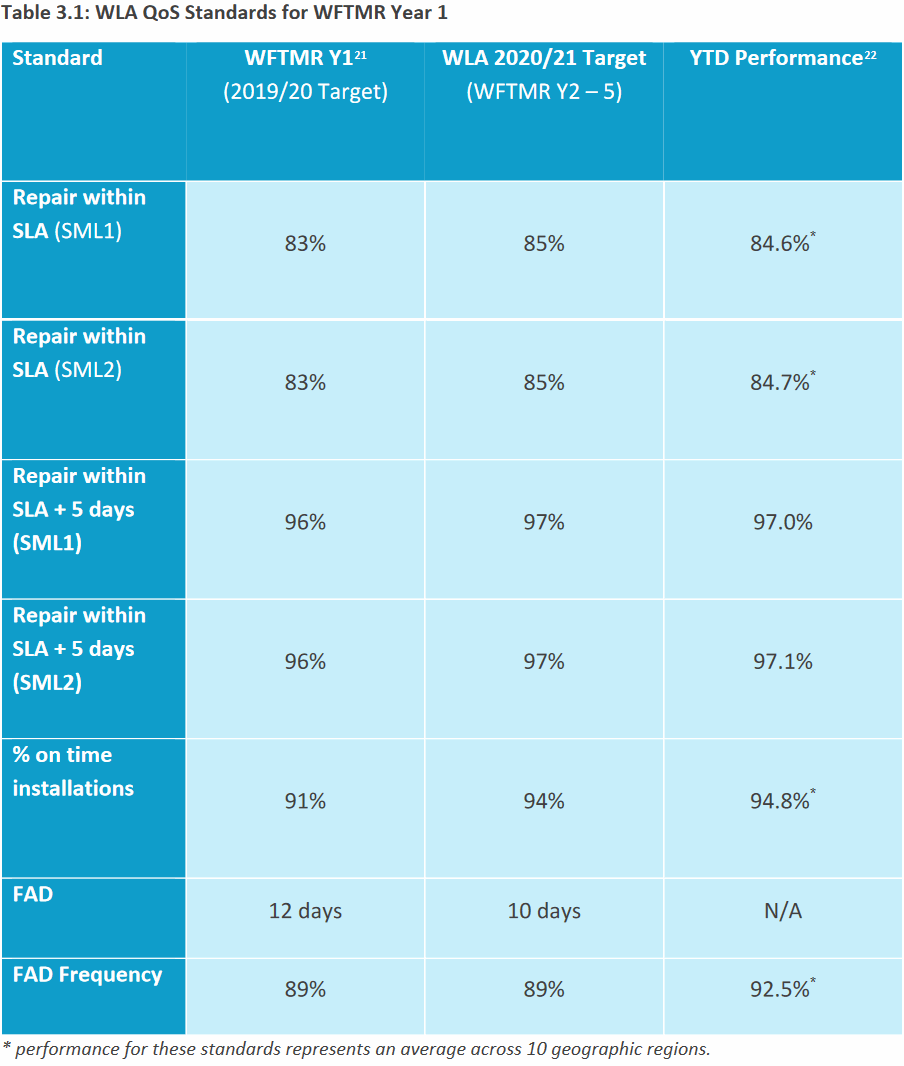






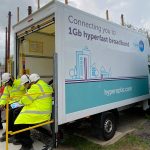

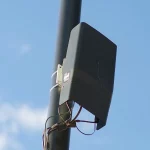


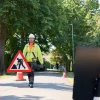

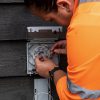








































Shame nothing was in it to stop BT and other ISP’s selling “Superfast fibre” packages in adverts all over the place without stating the speed you get. Apparently its more than acceptable to just adding a “if it drops below our service standard for 3 days you’ll get a voucher”. Meh.
Allowing this miss-selling to continue just covers up the fact that you’re not getting a “superfast” connection in the slightest and more than likely not fibre to your actual house either.
That’s sort of been my issue with the way Ofcom regulates things in the consumer market for a while now – their focus is on ensuring you can hop between retail providers constantly, or walking away from contracts if you can’t reach advertised speeds, and less on actually making it unacceptable to be an operator where your customers leave due to unresolved service faults.
I agree. I have Sky ‘superfast’, which is actually superslow (13mbps max).
Advertising is more the ASA’s domain, and sadly they did win a key court case when challenged on this point by CityFibre a couple of years ago.
That’s your only takeaway from changes that will increase the speed of FTTP rollout across the whole country? Would you complain about a cure for cancer doing absolutely nothing for your headaches?
At least with real fibre the speeds you get is what you will get (due to the way openreach is forcing suitable capability links to support it)
Even if it can’t do the 1gbe speeds at least you have QOS that attempts to limit packet loss (something that is completely missing in docsis, witch values speed over packet reliability)
I would be using vdsl right now if it was not for the low 25/5 ish speed I would be getting
I be super excited when I see the fttp ports on my pole I drop virgin almost immediately got enough crap information to get out of my contract without a fee at any time (and i don’t have TV with them just phoneline for cost reasons and broadband) they have to install FTTPn at my house virgin for me to stay with them
Virgin is mostly 99% reliable virgin 400/35 connection I have intermittent packet loss randomly and wide jitter of 30ms ish (significantly higher packet loss when downloading, modem isn’t logging any errors this time)
Bt should have never been prevented from Upgrading there network to full fibre as it let’s virgin just sit there and not bother resolving the issues with there network (this will force virgin to replace coxal with actual FTTPn so they can compete with Openreach, as its the only way to fix issues on a per street level and reduce it to a per house fault when there is one)
As a shareholder in Bt , I don’t see how they are going to recover the 12 billion that they are going to spend , will the company be worth 12 billion more
??
Coherent and succinct analysis in the Evening Standard. FTTP is going to be a pricing free-for-all for BT which gets to charge whatever pleases for the next decade.
https://www.standard.co.uk/business/ofcom-allows-bt-to-charge-more-for-full-fibre-so-it-can-fund-infrastructure-rollout-b924836.html?amp
Isn’t this a similar approach to how it was handled in Spain – e.g. the incumbent had to provide regulated wholesale access to the lower speed products, but could do what they wanted with the faster tiers? Albeit a decade later.
The number of Altnets currently queuing up to provide FTTP show that such investment is sound despite varying estimates of their eventual market share. The OR investment, whilst late, is needed otherwise Openreach would not be worth anything come 2027. They have committed to only 20m premises so far a good percentage of which is likely to be without competition. A recent valuation of Openreach was £20Bn.
It will be up to the other BT divisions to rebuild their estimated value, particularly BT Consumer who will be under increased competition for cost/service.
“only 20m premises so far”
lol
Why on earth would someone still be a BT shareholder?
@GNewton LOL, thanks for the chuckle! My response would be “old people”. I’d much rather put my money into disruptive innovation, than old-skool telecoms/banking/fossil-fuels/etc – I mean, I guess that someone who was invested in BT, might also be invested in BP, or Shell… *ConcernFace*
I am north of Watford and will believe this if it ever happens (and nt before) ..:-(
It’s just as bad everywhere except high density cities. I live a few miles from Southampton (in a small town) and know of only one person with access to a true fibre connection in the whole Southampton/Portsmouth area. I don’t even get decent 4g (one provider 8mb). I will also believe it when I see it just don’t believe it is a North/ south issue.
well with this announcement and rge one from city-fibre recently there is 300 odd smallish towns and villages getting on the list for FTTP.
I was surprised to see so many towns etc in the north to get on the list including my village just outside Newark-Upon-Trent which was not on the OR radar but City Fibre has 4 ISP’s and hopefully more will sign up as they get homes passed
This whole report doesn’t even address the real issues here. This country is more than a decade behind of where it should be in terms of fibre broadband. And Ofcom shares some of the responsibility in this, in addition to longstanding failed government policies and BTs longstanding past incompetence.
The real issues are, and the solutions?
If all the Altnet proposals come to fruition then at least we are making progress and we can only hope that all providers will seek to avoid each other initially so the total FTTP premises rises quicker.
Ofcom will however need put in place other controls/obligations to protect consumers as we appear to be simply changing the haves and have-nots at each speed tier.
I see nothing in the above that protects the have-nots, those receiving a poor service going forward nor my old issue that coverage does not equal capacity.
What would you like them to have said that would change this fact? At least there’s a more coherent plan now. Don’t get me wrong, to say “the 2020’s will be the decade of gigabit” when other countries did it in the 2010’s is a tad bit annoying, but the past is the past. Frankly, as a VM customer, i’m just eagerly awaiting for the end of the year when (hopefully) I leap from 200 to 1000. No point shelling out now for already-existing higher tiers.
We are behind where we should be. Remember that BT was going to roll out FTTP rather than FTTC 10 years ago – and decided not to? I understand that required a fight for FTTC within the BT Group.
On the upside, altnets are spawning. I’m on Colindale exchange which despite service a dense urban area is not in Openreach’s programme currently. Community Fibre have deployed and I’m with them. The competition is snapping at OR’s heels.
This is rather silly. They want to regulate leased lines – which means force OR/BT to sell them at high prices? What a joke.
It’s counter intuitive but it does help. One of the reasons there has not been much fibre investment is because Ofcom held down the prices on copper broadband – meaning that it was very hard for network builders to make the case that they should build fibre versus rent copper. If copper broadband prices had been higher, fibre would have been built sooner.
Well overdue and good to see Openreach/Ofcom finally going for FTTP as the target.
It’s a shame we didn’t start doing this a decade ago when it was obvious then that this would be needed. Still, this is encouraging and I look forward to the Government’s announcement tomorrow.
A decade ago BT and Ofcom were in the midst of the shenanigans around whether Openreach would be fully or partially divested. Until that was settled investors sat on their hands – both BT investors and altnets – because until that was resolved it was impossible to work out if they’d ever make a return.
The countries that pressed ahead at that point had one thing in common – regulatory certainty to give investors confidence.
1992 and Margaret Thatcher
bt was going to replace the whole network with fibre (there own network and uk factory’s witch they had already owned, making the fibre) but was blocked so we have been stuck with adsl and stopgap vdsl for 30 years and another 8-9 years before we see full fibre roll out
@Leex
Yup. Surprise, surprise, it was a government so out of the loop with the digital world that decided the fate of the country for the next 40 years.
The world’s fifth largest economy, and “superfast” equates to 40 Mb/s using 1980’s copper.
Great, probably the worst thing they could have done. Typical political bureaucracy no doubt including a few back handlers, they have set up Open Reach as the monopoly provider whilst shutting the door on altnets. So I still can only wait for Open Reach to update my line. The BBC report rightfully slams them both calling out monopolistic moves at play:
http://www.bbc.co.uk/news/technology-56435371
Oh and it means more on meaning higher prices for consumers due to no competition and the regulation of other pricing.
This country is a slave to Open Reach and BT and all their share holders when it comes to telecommunications. For Gods sake change the laws and force competition to be more freely allowed.
Hopefully that 5G will appear before my line gets upgraded if it ever does. I think we all know what Open Reach’s idea of speed is..
how on earth have they “shut the door on alt nets”? Look at the responses Mark has posted – they’re just as happy as BT are, and that’s saying something given the sort threats they had been issuing before.
This is a multi billion pound investment, it’s entirely right and proper that the price can’t be ratcheted down every time TalkTalk whinges to Ofcom. That sort of penny pinching is why we ended up with solutions like FTTC. Competition works both ways, you also can’t tell Openreach that they have to cap their prices while allowing their competitors complete freedom.
5G (in its proper form and not just “4G+”) requires a lot of the same infrastructure, it’s really not a panacea.
Firstly those 4G towers already have fibre connections to them, so upgrading to 5G most likely won’t be severely impacted by this, but as highlighted in the report they have made allowances for this infrastructure separate the other roll outs. Your argument is moot here.
This report also does little to address 30% of the population in rural areas which won’t have access to fibre broadband. In rural areas Open Reach is nearly the only provider connecting FTTP to all the endless new build estates being built at rapid pace leaving existing properties to suffer, as altnets don’t invest or aren’t able to upgrade existing Open Reach owned FTTC lines. And I don’t think you properly read the report, certainly you seem to have little concern for increased prices to the consumers, are you a BT share holder?
If you simply upgrade 4G masts to 5G, you get a small increase in capacity but nothing like what you’d need to compete with even FTTC, let alone cable and FTTP. For 5G to even hope to deliver on its promises for “gigabit speeds” requires a radically different approach, with cells shrunk and moved much closer to homes. A lot of investment, and just like FTTP this will be targeted at places with the best returns e.g. the usual city centres.
In rural areas it is not guaranteed that the existing masts even have appropriate backhaul, they might only have fibre to a handful and use microwave to get out to the rest.
Altnets can build wherever they like, as we are seeing. They also have access to Openreach’s pole and duct network. Some housing developers have not signed up with Openreach, choosing to go with altnets that no one’s heard of and without much of a choice of ISP. There are simply no more excuses to intentionally knobble Openreach and Ofcom seem to have finally recognised this.
You’re right, I’m not going to fuss over the fact that my broadband price may or may not rise a bit – it goes up anyway. Infrastructure costs money after all. If it means paying for a future proof, modern, fast network then fantastic. I’ll ignore the shareholder remark, it’s such a lazy cliched argument
@M
Increased overall Fibre presence improves availability/cost of Fibre capacity for mobile masts.
20% rural subsidy covered by Out/In Procurement and vouchers (OR best placed to bid but not exclusive). Not the purpose of this review.
At least OR New Build will be regulated (for lower speed), other New Builds provided by Altnets will not be.
Yes Ofcom are allowing FTTP high speeds to rise to stimulate investment presumably counting on competition and preventing non-geographical pricing to contain them.
M
wondering if you are deliberatelty trying to be confrontational industry (ie those who actually build) have welcomed the news — seems you (who doesn’t build networks ) have not. Sarcastic comments on new estates who have the choice of fibre providers and are actually paid to have fibre on those development by the builders . – Developers now have more choice than ever to choose who they want to fibre thie development – not sure the premises near to those developments have any impact of relevance as they would never be part of the scope only in very unique circumstances
I don’t think you properly understood what you read M.
Masts normally use fibre lease lines (the hardwired ones anyway) and can be upgraded to 10gbe links if needed
They won’t just plonk high capacity 5g onto a mast without upgrading the back-haul links first as that would cause all sorts of problems
On the side of monopolistic practices, I keep hearing that the government’s targets keep on track to add more premises on full fibre but apart for high density urban areas there is no regulation/incentive to promote overbuilding. This is what would really benefit the consumer, not the monopoly of the one and only provider who chose to “tick the full fibre box” in your suburban or rural area and now has free reign to charge you an arm and a leg for substandard service with the blessings of the government and the regulator for “bringing you full fibre support”. I live in Hemel Hempstead, a 85,000 strong town where VM has strong monopoly on full fibre. No serious altnet will consider breaking VM’s reign now that OR is disincentivised to invest any further and I don’t see any strong efforts to push VM to open its proprietary network to altnets.
@Ivor, doesn’t the infrastructure required for 5G also depend on the frequencies used? As I u defat and it their are two versions of 5G, one for full speeds but requires many cells as the range is short. In the U.K. we use an in between solution though, not the slower longer distance one, and not the faster short distance one, but somewhere in between.
Also altnets don’t just randomly upgrade existing Open Reach lines to FTTP do they, last I checked they need to be used in conjunction with the voucher scheme to install it, particularly in rural areas. They don’t seem to be in the habit of cabling a village of say 2000 properties with existing Open Reach network to their own backs. I’m afraid your view is rather narrow on this topic.
And I’m glad your happy to pay price increase, your ISO must love you.
@Fastman, well I’m sure your an armchair expert like all the rest of us here, I can’t imagine you install network infrastructure let alone are involved in the decision making processes. All you’ve done is confirmed one of my points it seems, that new builds get FTTH.
@125us, I did thank you, less of the pedantic comments. And you believe I didn’t perhaps you could enlighten us to why and explain it, rather then state a personal opinion.
@Leex, ok, so what cabling would be required for this, if a site already has a fibre backbone feed, the article claims the issue with feeds to masts has hopefully been resolved by opening up leased lines. But a fibre cable has a massive capacity right? So in your view what constitutes an upgrade to the back haul for a 5G network.
@Theo, yes couldn’t agree more, although it is sad that it relies on altnets installing their own cabling, rather then one provider doing so and then ever provider using that same cable to your property. But otherwise yes, it does seem to be the idea of well you’ve gone one provider so why do you need anyone else? Even if Virgin means Virgin only, etc etc. It seems the model they want to use for FTTH is different to the previous ones where if you had an Oprn Reach line you could chose who you went with. And if you had Virgin you could revert back to Open Reach, but as you said if you want fibre speeds and you have Virgin your out of luck. As you imply not much consumer choice.
@Meadmodj How? If a mast wants to be erected and no fibre back bone exists to it, then they still have to install one, and usually they are no where existing properties, so I’m not sure how installing fibre to existing or new build properties in rural areas will improve that? Plus as stated they will offer leased lines for masts, so I’m not sure how the costs will be impacted on those. I don’t understand your last point, not sure how allowing FTTP speeds to rise stimulates investment?
Still stuck on aluminium cables installed in the 1980s copper shortage here – Openreach seem to have no interest in upgrading the infrastructure even though everything is conduited and easily accessible and only a few 100m from the exchange. Lucky to get a serviceable phone line, exchange will sync at 20mbps on a good day but download limited to as little at 2mbps at peak times because of lack of investment in backbone, but not to worry, sync speed is all they measure. I’ll believe it when I see it, for now, OR is my backup line as even single channel 4g is delivering a solid and reliable 70mbps down and 30mbps up. 5g will make OR obsolete – only question is, will I give up and ditch the landline before they upgrade it?
@Steve
Not exactly the same situation here, but BT Openreach (our only supplier) has a building up the road from me which is where our FTTC node is. I doubt we’ll see FTTP for another decade or so.
It looks like CityFibre is the only one that has shown even a whiff of remote gigabit plans in western Leicestershire for towns of equal sizes to mine, but located to the north and to the east; the one up north is completely isolated with planned rollout, while mine has links to the city and is ignored. Needless to say, I don’t understand the decisions they’re making. I just hope they do.
As for LTE and 5G, frankly, I’m in agreement with you there. The mobile network operators are upgrading their infrastructures at a much greater pace. With EE, I’m getting up to 90 Mb/s downlink and 20 Mb/s uplink, with pings similar to my VDSL2 connection. LTE downlinks are consistently higher than what BT Openreach is supplying to my town, and I’m in one of the best locations from the cabinet, bar living next to it.
an important point that people forget when bragging about their 4G connection (especially when claiming that this is the reason why we don’t need fibre), is that it wouldn’t be so fast if the entire neighbourhood copied them.
It doesn’t even work well when you have a purpose built 4G network for the areas you don’t want to serve by wire, as Australia have done.
5G doesn’t change any of this. FTTP still knocks the socks off of it
@Ivor
Not saying we don’t need FTTP. In fact, quite the opposite.
But one is far more prevalent than the other with speeds consistently above what the majority of people can achieve with the existing archaic technologies of Openreach.
By all means, FTTP is superior in every way. You would need to be an idiot to suggest otherwise.
G Newton, ‘Why on earth would someone still be a BT shareholder’
I bought shares at 80p and today they are just under £1.50.
Thats called a profit in my books.
The question you should be asking yourself is ‘ why, as a resident troll, am I here? What is my purpose ? Even when there is resounding good news for the industry you come up with stupid negative comments.
You and talk talk should get a room .
Ciao for now x.
It’s weird 21 years ago I was paying £40-50 a month for 0.5-1 meg on cable and I was the first people in the exchange to get adsl with the green saucer modem with the USB connector.
Now roll on I left £22 a month FTTC due to cross talk and next door having cheap external fairy lights on all year to VM and get 230 meg (low utilisation area) for the same price as I got for 1, twenty years ago.
I thought that I would have to stay on VM as it looked that we weren’t on OR’s plans but then suddenly we were announced on the city fibre rollout, and one of their ISP’s is Zen who are an excellent ISP and their current prices for FTTP is again around the same.
So in real terms we have had race to the bottom pricing for each speed increase and I would be happy for once to pay MORE to get that FTTP gigabit even if it went to £100 per month as we need to get these cables in.
“Ofcom Unveils 2021 Changes to Boost UK Full Fibre Broadband”
I can see only 6 changes, where can I see the remaining 2015 changes?
Hope they get a good price for all that copper I used to work on. Happy days!
Although there appear to be some arguments for allowing/encouraging overbuild, it will still be a faff when it comes to swapping ISP if they use different networks. Given the way we are encouraged to shop around for best electricity and gas prices, imagine if they had to come and change the cables each year because the network was provided by a different utility company.
Maybe the balance would have been to ensure whichever network gets to a street first must lay conduit and, as with the OR pole and duct access, must allow overbuilds to put their own fibres down the same tube. They’d then be allowed to charge a rent or one off payment to recover some of their costs. This would mean digging up the street once. The conduit would be technology agnostic a and if government say 3 nets can be supported each length of duct could end up costing a 1/3 of the original streeters cost for each net using it.
“This is a once-in-a-century chance to help make the UK a world-leading digital economy.”
You had that in the 1980s, but people who were so clueless in what they were making decisions on decided that it wouldn’t benefit the country and threw the concept under the bus. Imagine where we would be right now if Nikola Tesla had the same attitude.
The UK is the world’s fifth largest economy, and yet here we are in 2021 describing speeds of 40 Mb/s as “superfast,” and anything above 80 Mb/s as “ultrafast.”
I’ll believe this “world-leading digital economy” when I see it. There’s an awful lot of catching up to do.
The infrastructure build should start in 2022, the government said.
The first to benefit will be homes and businesses in Cambridgeshire, Cornwall, Cumbria, Dorset, Durham, Essex, Northumberland, South Tyneside and Tees Valley.
The next areas are expected to be Norfolk, Shropshire, Suffolk, Worcestershire, Hampshire and the Isle of Wight.
A former voucher scheme is also being relaunched to provide more immediate help to those struggling with poor broadband coverage, with up to £210m being made available.
It is expected that commercial deployments of gigabit-capable fibre networks will reach more than 70% of premises by the end of 2025, without government intervention.
The government has said that reaching the final 1% of homes in very remote areas could be prohibitively expensive.
So what’s all this mean for Altnets?
I think the following statement from the FT captures the crux of it: “[The WFTMR] has tipped the balance of the telecoms market in favour of companies building communications infrastructure as opposed to the consumer-facing service providers.” Fundamentally, Openreach wanted fair bet and they’ve got it – which also benefits Altnets.
Below are the key benefits to Altnets:
1) Longer term regulatory stability – as the WFTMR covers 5 years rather than 3
2) Price controls – not expected for at least another 10 years for speeds above 40Mbps, benefitting all FTTP infrastructure builders (openreach and Altnets) at the detriment of retail only ISPs
3) More / assured network access – Altnets get DFA in rural areas (tier 3 areas) and wholesale access in slightly competitive areas (Tier 2 areas)
4) Some protection from openreach – Volumetric based discounts (to retail ISPs) from Openreach will be regulated by Ofcom, and no geographic discounts would be permitted, which implies aggressive price discounting competition from openreach I will be somewhat curtailed
5) Lower competition from retail only ISPs – opeanreach is likely to rise prices in tier 2 areas, which the retail ISPs will be forced to pass on to consumers. Wholesale only Altnets (Cityfibre) and on-net ISPs (e.g. Virgin Media) benefit hugely from this
The only real downside to Altnets is a more aggressive and nimble Openreach, especially as it will no longer be weighed down by the additional cost of running a copper network in in parallel to fibre. An ambitious ask that wasn’t met from Altnets was for Ofcom to take on a tougher stance on preventing overbuild (especially in Tier 2 areas) – which wasn’t really a fair ask anyways as it wouldn’t be politically feasible to implant.
All in all, Altnets hugely benefit from this regulatory update.
Is this fair? Am I missing anything?
All I’m left wondering is :
1. With taxpayer money going into the copper in the first place, surely when that’s then sold at a profit at today’s prices that money should go back to the taxpayer and then we call it quits on whatever BT want to then charge consumers for the fibre they pay to deploy in the originally taxpayer funded ducts?
2. Surely BT are still at an advantage due to the amount of money they have to play with and invest with as a company vs VirginMedia? BT also have had an established company basically given to them so they benefited from zero startup costs.
3. Unless I missed it presumably Sky et al don’t get access to any FTTP customers that BT deploy to? So there will be waves of streets including mine that will be “BT only”? Fine with that but the above points I make mean this hasnt been done on an entirely level basis.
So even getting them to give back the copper *still* puts them at a slight advantage (less digging, more money to slosh around than rivals, established systems as the “defacto” provider)
BT is where it is because of its history, OfCom should be allowing them to give up copper in exchange for doing whatever they want with their own cash.. but this ruling does seem to unfairly give BT an advantage whatever way you slice it.
I agree the plans proposed will increase FTTP deployment undoubtedly (it will reach that goal at least) and there must be commercial reasons for a business to bother doing that.. but these plans appear to have sold us short to reach that goal.